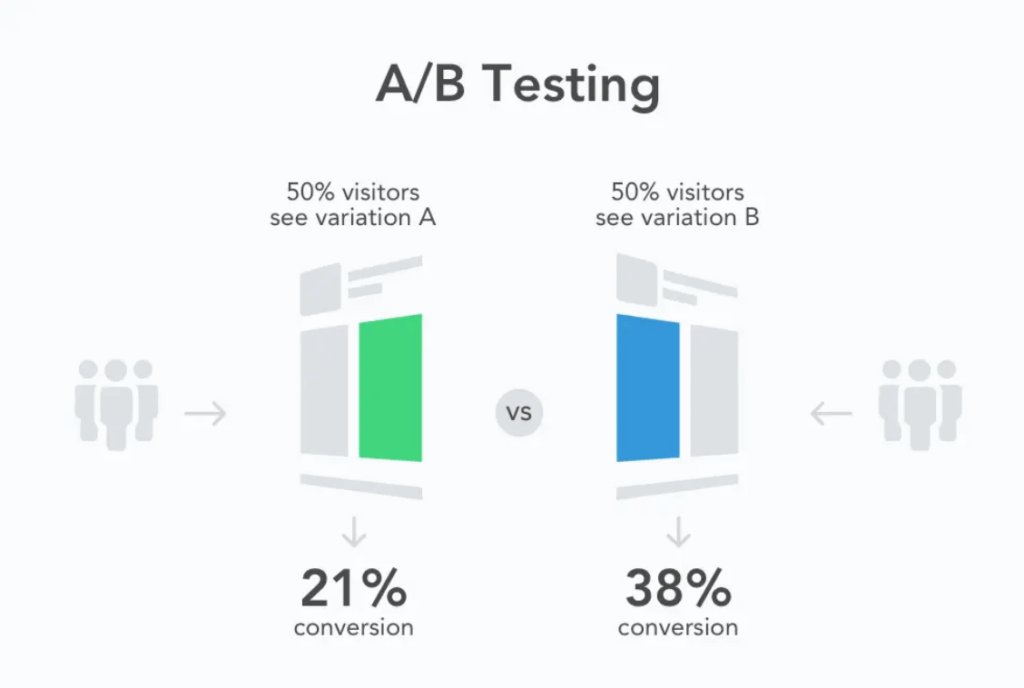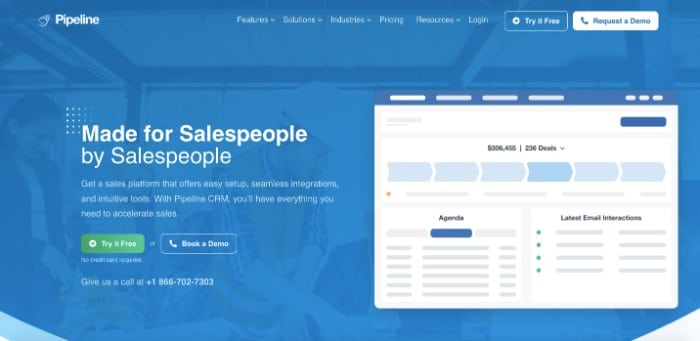CRM Marketing & A/B Testing: The Ultimate Guide to Data-Driven Customer Engagement

CRM Marketing & A/B Testing: The Ultimate Guide to Data-Driven Customer Engagement
In the ever-evolving landscape of digital marketing, staying ahead requires more than just intuition; it demands a data-driven approach. This is where the powerful combination of Customer Relationship Management (CRM) marketing and A/B testing comes into play. CRM marketing, at its core, is about understanding and nurturing customer relationships. A/B testing, on the other hand, is a systematic method for optimizing marketing efforts by comparing different versions of a campaign element to see which performs best. When these two strategies are interwoven, they create a potent synergy that allows businesses to refine their marketing strategies, personalize customer experiences, and ultimately, boost their bottom line.
This comprehensive guide delves deep into the world of CRM marketing and A/B testing, providing you with the knowledge and tools you need to harness their combined power. We’ll explore the fundamentals, best practices, and real-world examples to help you transform your marketing efforts from guesswork to a science.
Understanding CRM Marketing
CRM marketing isn’t just about having a database of customer information. It’s a holistic approach to managing and analyzing customer interactions throughout the entire customer lifecycle. The goal is to build strong, lasting relationships that drive customer loyalty and advocacy.
The Core Components of CRM Marketing
- Customer Data Collection: Gathering comprehensive customer data from various sources, including website interactions, social media activity, purchase history, and customer service interactions.
- Customer Segmentation: Dividing your customer base into distinct groups based on shared characteristics, such as demographics, purchase behavior, and engagement levels.
- Personalization: Tailoring marketing messages and offers to individual customer preferences and needs.
- Automation: Using CRM software to automate repetitive marketing tasks, such as email marketing, lead nurturing, and customer service follow-ups.
- Analytics and Reporting: Tracking key performance indicators (KPIs) to measure the effectiveness of your CRM marketing efforts and identify areas for improvement.
Benefits of Implementing CRM Marketing
- Improved Customer Retention: By understanding your customers better, you can provide personalized experiences that foster loyalty and reduce churn.
- Increased Sales: Targeted marketing campaigns and personalized offers can lead to higher conversion rates and increased revenue.
- Enhanced Customer Satisfaction: Providing a seamless and personalized customer experience can lead to higher satisfaction levels.
- Streamlined Marketing Processes: Automation features within CRM systems can free up your marketing team to focus on more strategic initiatives.
- Data-Driven Decision Making: CRM analytics provide valuable insights into customer behavior, allowing you to make informed decisions about your marketing strategies.
The Power of A/B Testing in Marketing
A/B testing, also known as split testing, is a method of comparing two versions of a marketing asset to determine which performs better. It’s a fundamental practice in data-driven marketing, allowing businesses to make informed decisions based on real-world results.
How A/B Testing Works
The process of A/B testing involves the following steps:
- Identify a Goal: Determine what you want to achieve with your test. For example, you might want to increase click-through rates on your email campaigns or improve conversion rates on your landing pages.
- Choose a Variable: Select a specific element of your marketing asset to test. This could be anything from the subject line of an email to the call-to-action button on a landing page.
- Create Variations: Develop two or more versions of the chosen variable. These variations should differ in a single, specific way.
- Run the Test: Deploy the variations to a sample of your audience and track their performance.
- Analyze the Results: After a predetermined period, analyze the data to determine which variation performed best.
- Implement the Winner: Implement the winning variation across your entire marketing asset.
Key Metrics to Track in A/B Testing
- Click-Through Rate (CTR): The percentage of users who click on a link in an email or on a website element.
- Conversion Rate: The percentage of users who complete a desired action, such as making a purchase or filling out a form.
- Bounce Rate: The percentage of users who leave a website without interacting with it.
- Time on Page: The average amount of time users spend on a specific page.
- Revenue per Visitor: The average revenue generated by each visitor to your website.
Integrating CRM Marketing and A/B Testing
The real magic happens when you combine the insights gained from CRM marketing with the iterative optimization offered by A/B testing. This integration allows you to create highly personalized and effective marketing campaigns that resonate with your target audience.
How to Use CRM Data for A/B Testing
CRM data provides a wealth of information that can be used to inform your A/B testing efforts. Here’s how:
- Customer Segmentation: Use CRM data to segment your audience based on their demographics, purchase history, or engagement levels. This allows you to create A/B tests that are tailored to specific customer groups.
- Personalization: Use CRM data to personalize the content and offers in your A/B tests. For example, you could test different subject lines in your email campaigns that mention a customer’s name or past purchase.
- Behavioral Data: Analyze customer behavior data, such as website interactions and email open rates, to identify areas for improvement in your marketing campaigns.
- Customer Feedback: Use CRM data to collect customer feedback and use it to inform your A/B testing ideas.
Examples of A/B Testing with CRM Data
- Email Subject Lines: Test different subject lines to see which ones generate the highest open rates, segmenting by customer demographics.
- Email Content: Test different email content, such as personalized offers or product recommendations, based on customer purchase history.
- Landing Page Design: Test different landing page layouts and designs, tailoring content to specific customer segments.
- Call-to-Action Buttons: Test different call-to-action buttons, using language that resonates with specific customer groups.
Best Practices for CRM Marketing and A/B Testing
To maximize the effectiveness of your CRM marketing and A/B testing efforts, it’s essential to follow these best practices:
For CRM Marketing:
- Choose the Right CRM Software: Select a CRM system that meets your specific business needs and integrates seamlessly with your existing marketing tools.
- Implement a Data-Driven Culture: Foster a culture of data-driven decision-making within your marketing team.
- Prioritize Data Quality: Ensure that your CRM data is accurate, complete, and up-to-date.
- Focus on Personalization: Tailor your marketing messages and offers to individual customer preferences and needs.
- Continuously Monitor and Optimize: Regularly review your CRM marketing efforts and make adjustments based on performance data.
For A/B Testing:
- Start with a Hypothesis: Before conducting an A/B test, formulate a clear hypothesis about what you expect to happen.
- Test One Variable at a Time: To isolate the impact of each variable, test only one element at a time.
- Run Tests for Sufficient Duration: Allow your tests to run for a sufficient period to gather statistically significant data.
- Analyze Results Rigorously: Use statistical analysis to determine the validity of your test results.
- Document Your Findings: Keep a record of your A/B testing results, including your hypotheses, variations, and outcomes.
Tools for CRM Marketing and A/B Testing
Several tools can help you implement and manage your CRM marketing and A/B testing efforts. Here are some of the most popular:
CRM Software:
- Salesforce: A leading CRM platform with a wide range of features and integrations.
- HubSpot: A comprehensive CRM platform that includes marketing, sales, and customer service tools.
- Zoho CRM: A cost-effective CRM solution with a focus on sales automation.
- Microsoft Dynamics 365: A powerful CRM platform that integrates with other Microsoft products.
A/B Testing Tools:
- Google Optimize: A free A/B testing tool that integrates with Google Analytics. (Note: Google Optimize is sunsetting in September 2023).
- Optimizely: A leading A/B testing platform for websites and mobile apps.
- VWO (Visual Website Optimizer): An A/B testing tool that allows you to easily create and run tests.
- Convert Experiences: A privacy-focused A/B testing platform.
Real-World Examples of Success
Let’s look at a few examples of how businesses have successfully used CRM marketing and A/B testing to improve their results:
Example 1: E-commerce Retailer
An e-commerce retailer used CRM data to segment its customers based on their purchase history. They then A/B tested different email subject lines and content variations for abandoned cart emails, personalizing the offers based on the products in the customer’s cart. The result was a 20% increase in recovered sales.
Example 2: SaaS Company
A SaaS company used CRM data to identify customers who were at risk of churning. They then A/B tested different onboarding sequences, providing personalized guidance and support based on the customer’s usage patterns. This resulted in a 15% reduction in churn rate.
Example 3: Travel Agency
A travel agency used CRM data to segment its customers based on their travel preferences. They then A/B tested different landing page designs and call-to-action buttons, tailoring the content to specific customer segments. This led to a 10% increase in booking conversions.
Challenges and Considerations
While CRM marketing and A/B testing offer significant benefits, there are also challenges to consider:
- Data Privacy: Ensure that you comply with all relevant data privacy regulations, such as GDPR and CCPA.
- Data Security: Implement robust security measures to protect your CRM data from unauthorized access.
- Complexity: Implementing and managing CRM marketing and A/B testing can be complex, requiring technical expertise and resources.
- Resource Allocation: Allocate sufficient resources to support your CRM marketing and A/B testing efforts, including software, personnel, and training.
- Integration Challenges: Integrating your CRM software with your A/B testing tools and other marketing platforms can be challenging.
The Future of CRM Marketing and A/B Testing
The future of CRM marketing and A/B testing is bright. As technology continues to evolve, we can expect to see even more sophisticated tools and techniques emerge. Here are some trends to watch:
- Artificial Intelligence (AI): AI will play an increasingly important role in CRM marketing and A/B testing, automating tasks, personalizing experiences, and providing data-driven insights.
- Machine Learning (ML): ML will be used to predict customer behavior, optimize marketing campaigns, and personalize customer journeys.
- Hyper-Personalization: Businesses will continue to focus on hyper-personalization, tailoring their marketing messages and offers to individual customer preferences and needs.
- Cross-Channel Marketing: Businesses will increasingly use a cross-channel approach, integrating their CRM marketing and A/B testing efforts across multiple channels, such as email, social media, and SMS.
- Focus on Customer Experience: The customer experience will become even more important, with businesses focusing on providing seamless and personalized experiences across all touchpoints.
Conclusion
CRM marketing and A/B testing are powerful tools that can help businesses build stronger customer relationships, increase sales, and improve their marketing ROI. By understanding the fundamentals, following best practices, and leveraging the right tools, you can harness the combined power of these strategies to achieve your marketing goals. Embrace the data, experiment, and continuously refine your approach to stay ahead in the competitive landscape of digital marketing.


